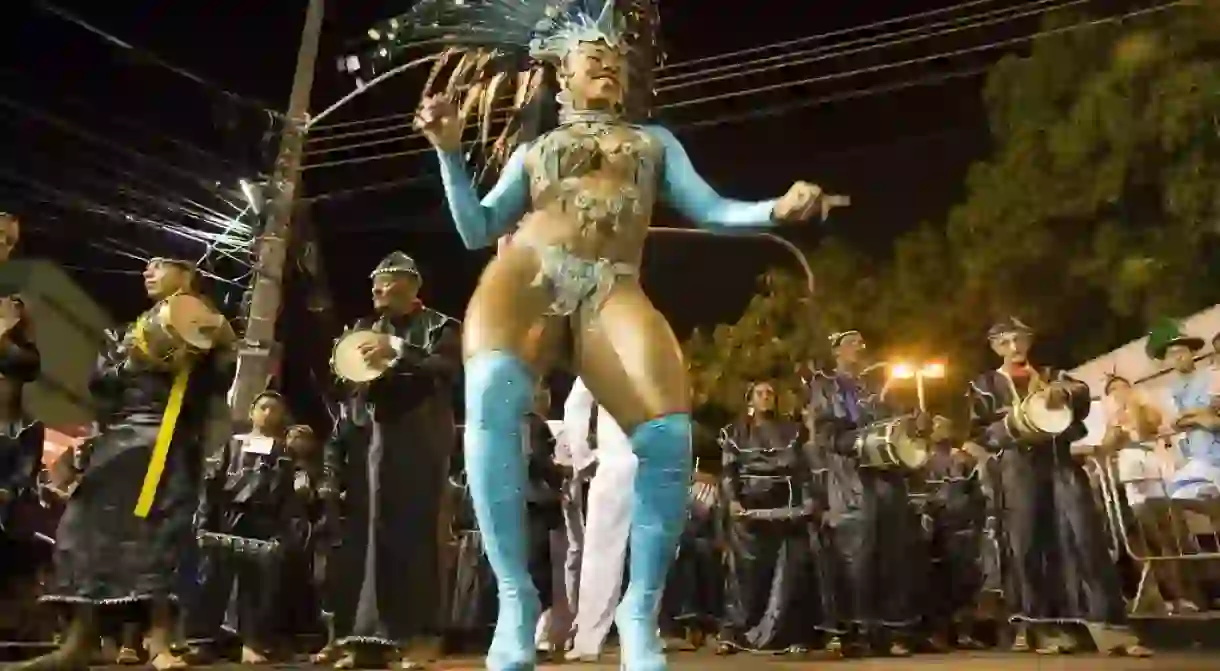Why the Best of Rio De Janeiro Is Found Beyond Carnival

Rio de Janeiro is known throughout the world for its week-long carnival full of of non-stop partying, minimal clothing, and an abundance of festivities. Though it’s great fun, it’s also a small piece of the city’s far larger picture, as there’s a lot more to discover beyond the feathers and glitter. Here’s your ultimate guide to the best of Rio beyond the carnival craziness.
Beaches
One of Rio’s main appeals is its breathtaking coastline with its selection of varied and stunning beaches. For a stroll along one of the world’s most iconic shorelines, head to Copacabana to visit its signature black and white promenade and its dynamic beach filled with hard-working vendors, sports-lovers, and crowds of sunbathers. Ipanema offers a chic retreat with a trendy, bohemian crowd and arguably has some of the most beautiful scenery in the south zone of Rio. For a more secluded getaway, head to the west zone of Rio and explore the beaches of Grumari, Prainha, Praia Funda, and the others in and around the Recreio region. These beaches are mostly untouched by human development and some are only accessible by hiking.

Hikes
Outdoor lovers will be in their element in Rio which has a huge selection of incredible hikes and forest trails to explore. The most popular hikes are the Dois Irmãos, Pedra Bonita, and Morro da Urca, three relatively easy peaks in the city which offer extraordinary views over the city. Those looking for something more challenging can try the Transcarioca hike, a 180-km (112-mile) trail that is split into several parts. Starting at Barra de Guaratiba in Rio’s west region, it winds through dense forest and alongside natural, untouched beaches before looping into Recreio, Barra da Tijuca and finishing in Urca. There is also a three-day hike through the Serra mountain range that starts at Petropolis and finishes in Terespolis.

Culture
The culture in Rio is diverse. Head to the body-conscious southern shores of the city for the beach-chic vibe and to be among sports lovers – at all times of day, people are running, playing volleyball, football, or surfing. The Centro (city centre) region is a bustling mix of people working at the city’s largest corporations and cultural activities such as museums, theatres. and art galleries. The Santa Teresa neighbourhood is Rio’s most artistic and hippie area, and is a well-known spot for local artisanal products, art studios, and a bohemian flair. Botafogo is Rio’s most happening neighbourhood at the moment with new hipster bars springing up and an electric atmosphere.

Art
Rio has a strong art scene with several quirky and fascinating artists. It also has a strong street art culture with names such as Marcelo Eco, Joana Cesar, Marcio SWK, and Marcelo Ment painting the streets with vibrant and thoughtful imagery. One of the most famous works of street art is by Eduardo Kobra who painted the world’s largest street mural in the downtown region near to the port. The mural, which stretches to 190 metres (623 feet) in length, is a collection of indigenous portraits. There are also several art galleries and museums to visit in Rio de Janeiro such as the Museum of Modern Art (MAM), the National Museum of Fine Arts, and the Niteroi Contemporary Art Museum.

Music
Carnival in Rio de Janeiro is famous for samba, the city’s most representative music. However, Rio is home to several other genres of Brazilian music such as Carioca funk, an edgy, rap-like music that grew from Rio’s favela and is accompanied by a funk dance that is a lot like twerking. There are also several venues to watch live music that showcase the very best of Brazilian music such as forró, pagode, sertanejo, MPB (Brazilian pop music), Brazilian rock, and choro. Some of the best places to go in Rio to see live local music include Rio Scenarium in Lapa, Circo Voador in Lapa, and Mercado das Pulgas in Santa Teresa where you can see live roda de samba, which is like a live samba jamming session among a group of samba musicians.

Famous attractions
Rio de Janeiro has some of the most famous landmarks and attractions in the world that are open all year round. The most famous in Brazil is the Christ the Redeemer statue which can be accessed by van, by train, or by hiking. The statue stands on top of the Corcovado mountain and offers panoramic views over the city, the Atlantic forest and the gorgeous Guanabara Bay. Another famous landmark is the Pão de Açucar, otherwise known as Sugarloaf mountain. To get there, the most common way is simply taking the cable car to the top, although rock climbing to the summit is an option too. The most rewarding time to go is for the sunset.














